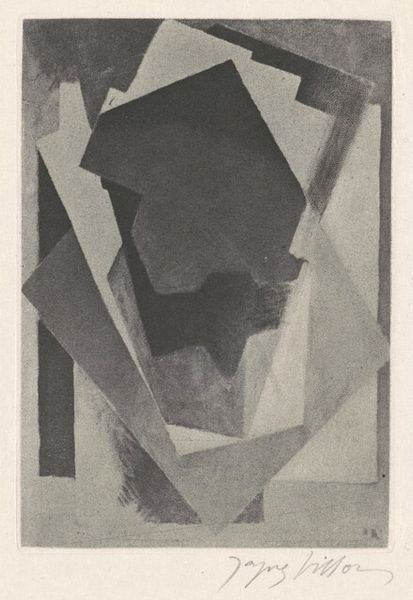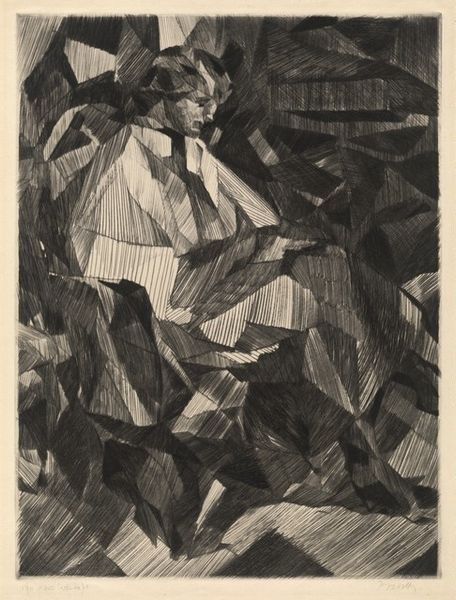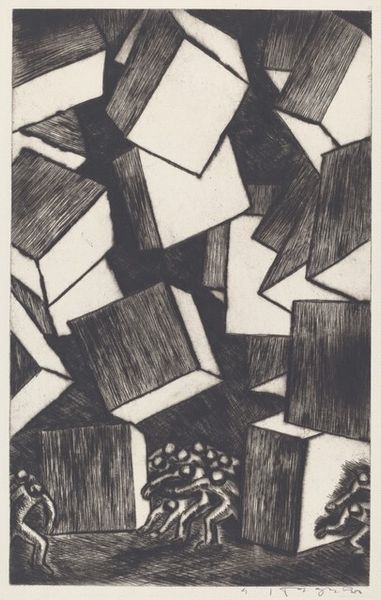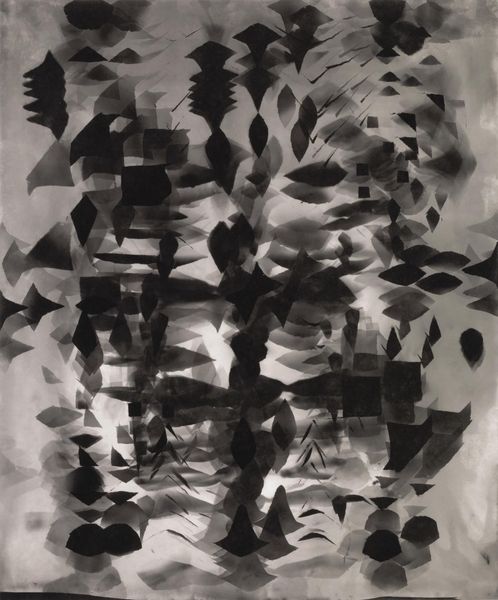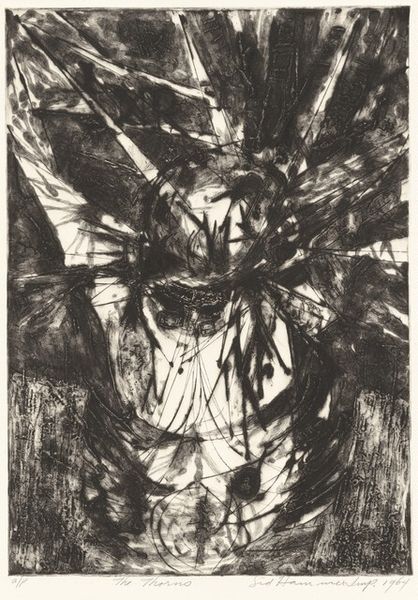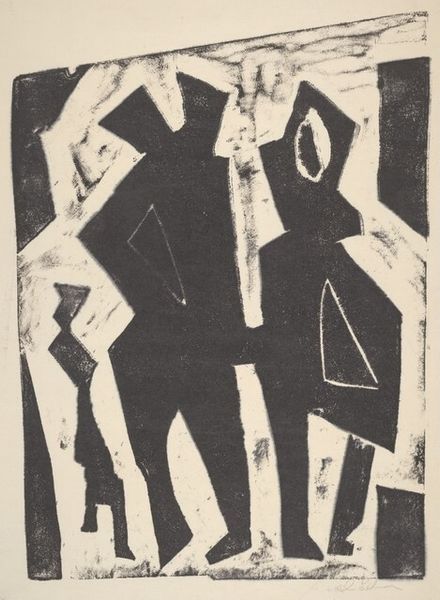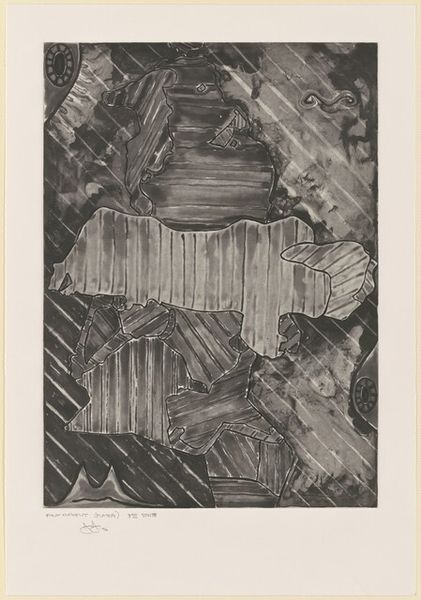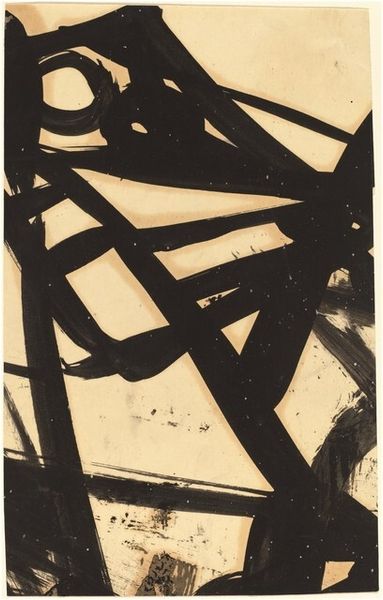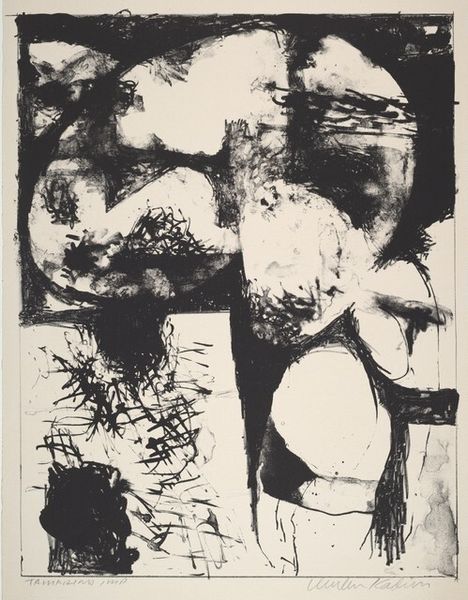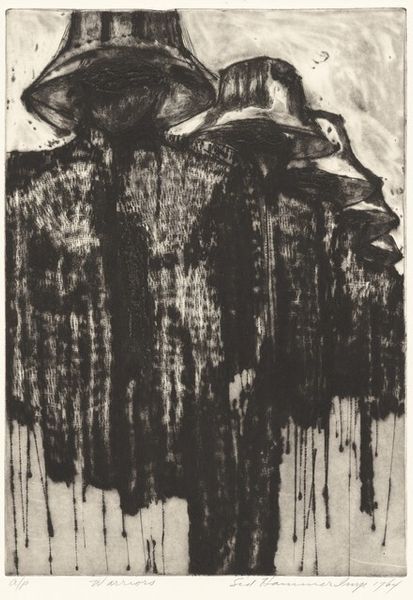
#
pencil drawn
#
amateur sketch
#
light pencil work
# print
#
pen sketch
#
pencil sketch
#
old engraving style
#
personal sketchbook
#
pen-ink sketch
#
sketchbook drawing
#
pencil work
Dimensions: plate: 55.1 x 41.2 cm (21 11/16 x 16 1/4 in.) sheet: 63.9 x 59.5 cm (25 3/16 x 23 7/16 in.)
Copyright: National Gallery of Art: CC0 1.0
Curator: Here we have Jacques Villon's 1913 print, "Yvonne D. from the Front." It’s a rather striking portrait done in pencil. Editor: Striking is one word for it. My first impression is... fractured. Like a shattered mirror reflecting a person trying to piece herself back together. There's something almost unsettling about the geometric breakdown of the subject. Curator: The fractured quality is a hallmark of the Cubist influence, quite characteristic of Villon’s style at the time. Notice how the artist reduces the figure and surrounding space into a series of intersecting lines and planes. It's like an attempt to capture multiple perspectives simultaneously, not just visually but conceptually. In doing so he tries to uncover more subtle symbolic meanings of a persons being. Editor: Conceptually is right. It feels… intentionally disjointed. What social statements are being implied about being fragmented during these changing historical events? Curator: In 1913 Europe, many people were fragmented and in social transition. There is also a school of thought that it references the fragmented and disjointed nature of modern identity. How the individual is constructed from a multitude of often conflicting experiences and influences, none of which feel whole or consistent. Editor: Right, so how do we read this portrait through that lens? Yvonne D. isn't just a person; she's a symbol. She reflects the anxieties and shifts in identity brought about by modernity and these conflicts in beliefs and identity. And who gets to piece them together, who decides on these identities? I wonder about Yvonne D herself! Was she given the right of her self definition? Curator: It makes one wonder whether Yvonne felt just as divided! And the artist is clearly invested in understanding his subject, to try to encapsulate a time of change through this particular subject. The interplay of light and shadow, achieved through delicate pencil work, lends a certain gravity to the composition. The shadows become heavy metaphor. Editor: But also notice the vulnerability. The exposed, almost raw quality of the sketch, as if stripping bare all pretense. In these raw states of self, vulnerability often brings the unexpected opportunity to create new belief patterns. Maybe we’re seeing a pivotal, and strong moment, even if the face isn't smiling? Curator: Precisely. So this piece, for me, has a unique quality of quiet resolve. And this resolves and sense of duty towards herself in times of monumental societal change are just another reason to revere this piece! Editor: And for me it serves as a reminder of the ongoing negotiations for control over narrative, visibility, and ultimately, the stories that we are able to tell, in these fragmented and exposed spaces.
Comments
No comments
Be the first to comment and join the conversation on the ultimate creative platform.
